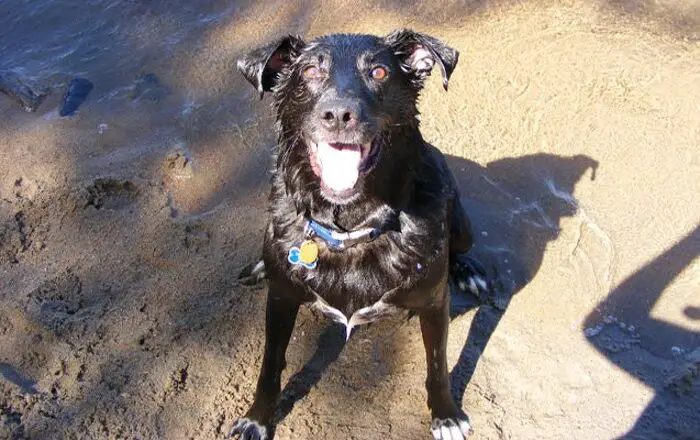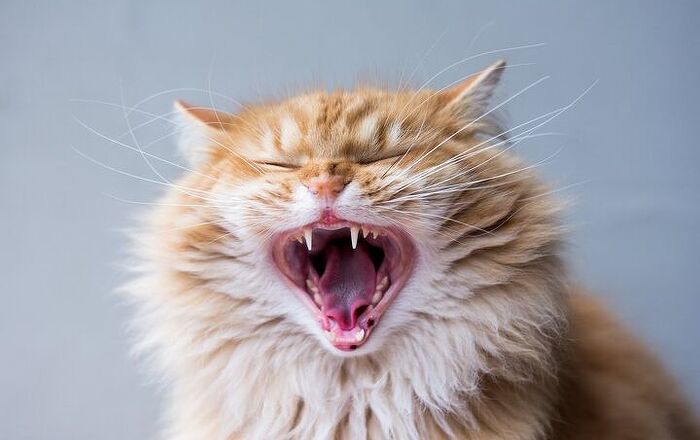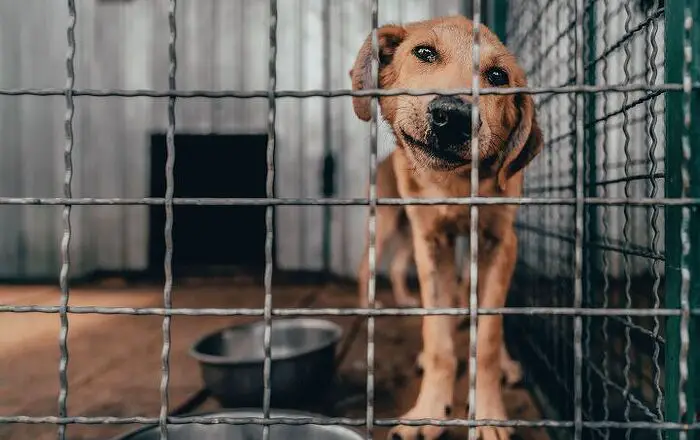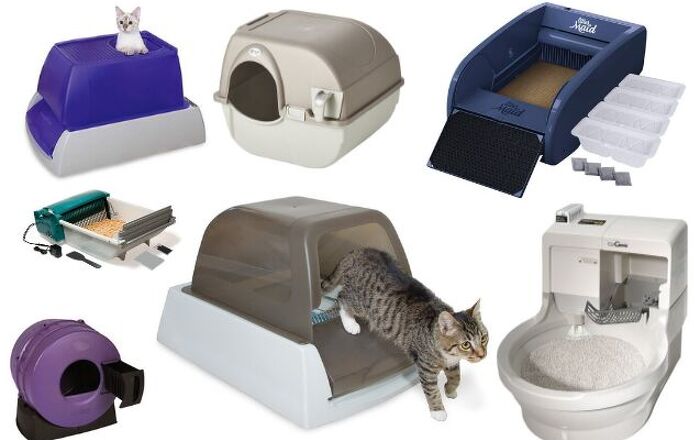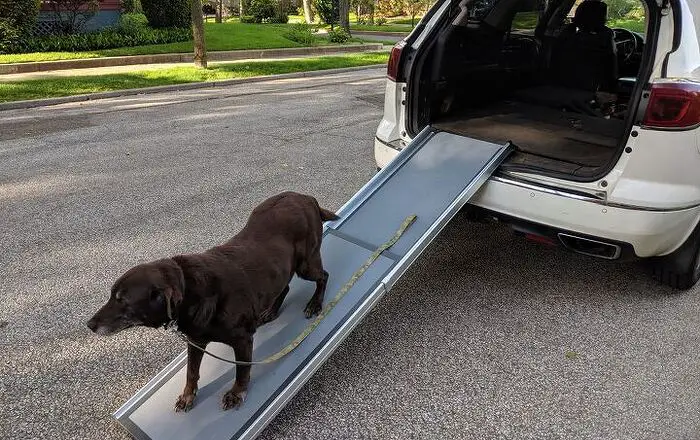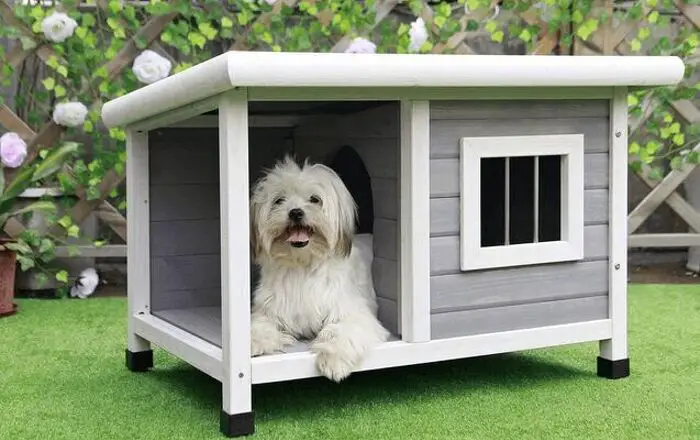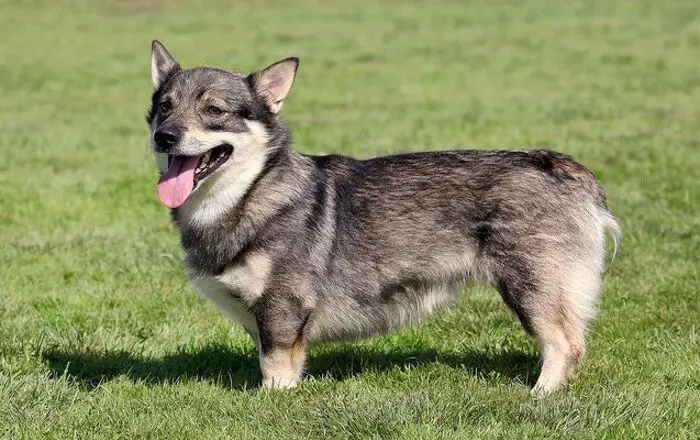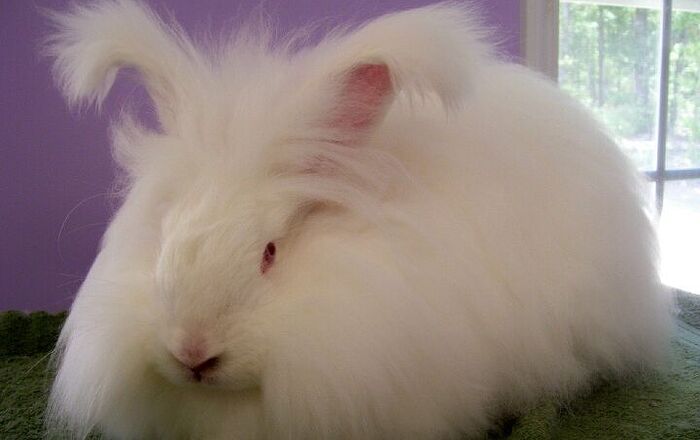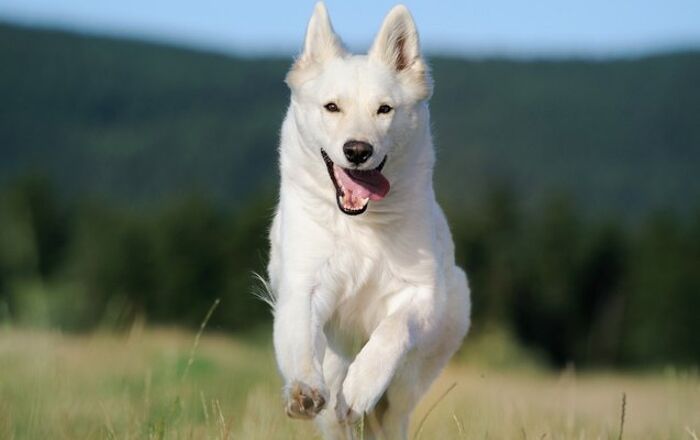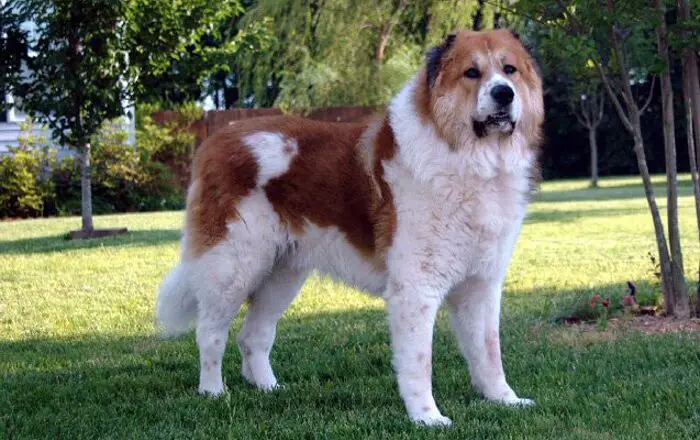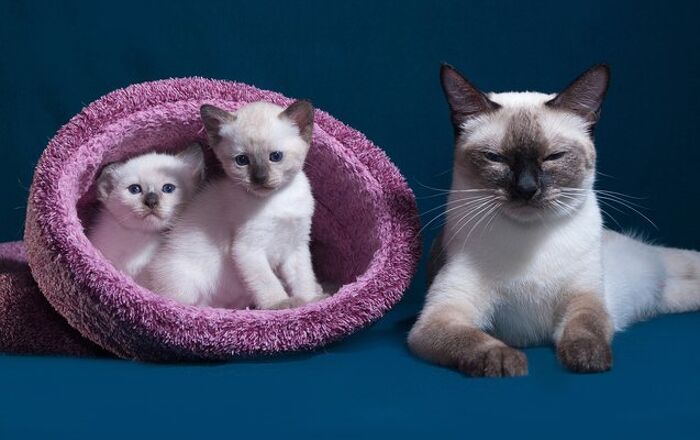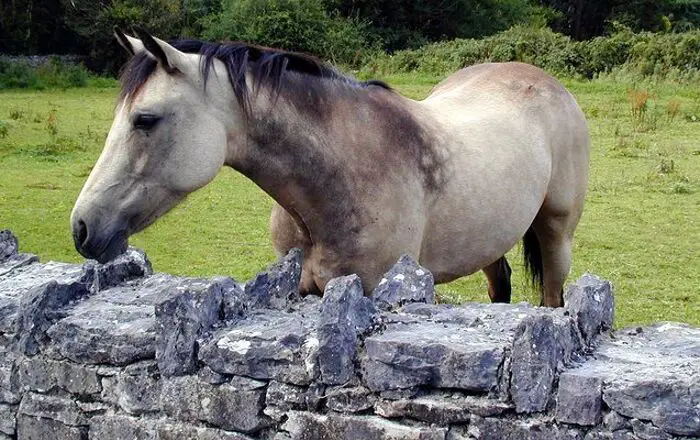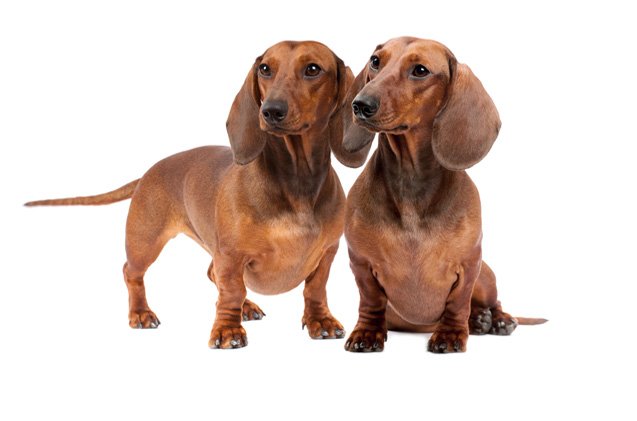
Dachshund Basics
You may know it as the “Weiner Dog,” but its actual breed name is Dachshund. Known for its long, stretched-out appearance and short legs, there are three types of Dachshunds: long-haired, wired-haired and short-haired. The only difference between the three is size and coat description; the distinct build is the same in any of the types.
Boasting a regal and intelligent expression on its face, the Dachshund has a long head with protruding and arched eyebrows, a long muzzle with a scissor bite and very strong teeth. Its eyes are either brownish black or deep red. Another distinguishing characteristic is its long ears that are soft to the touch.
If you’re looking for a happy addition to your family, you can’t go wrong with a Dachshund – it always has a friendly look on its face. Read on to learn more about the breed.
You may know it as the “Weiner Dog,” but its actual breed name is Dachshund.
Origin
The Dachshund can trace its origins hundreds of years ago to Germany. Some sources place the origin of the breed as far as the 15th century, but a more likelier number is late 17th to early 18th century, when first concrete mentions of a dachshund-like breed can be found. Books from that era describe certain dogs named “Dachs Kriecher” (meaning “badger crawler”) or “Dachs Krieger” (“badger warrior”), and it is largely believed that this is when the Dachshund breed was actually developed as such- the previous mentions were more general and referred to all types of dogs fulfilling the role of badger hunting rather than a specific breed.
Bred to track and hunt badgers, this breed was developed with the specific sport in mind. The Dachshund was engineered for this hunting activity and it is directly reflected through its unique body shape. Its short legs let it burrow deep into the badgers’ dens and its long, sturdy tail gave the hunters a “handle” they could pull to retrieve the burrowing dog out from the den. As well, its large and paddle-shaped paws made digging efficient and its loose skin ensured it wouldn’t tear as the dog tunneled into tight burrows. The smaller Dachshunds were used to hunt hare and rabbits, while the larger ones caught smaller animals like otters and foxes. Interestingly, the smooth-haired type of Dachshund is believed to be the oldest of the tree, with the wiry and long-haired variants being developed later in the breed’s history.
While originally developed to be used for hunting, in the 1800s, Dachshunds moved from hunters to cherished and pampered pets. It is then when the dogs were bred to be smaller in size- the Dachshunds became about 10 pounds lighter in this transition. Not unlike most small dogs in that period, Dachshunds were beloved lap dogs of ladies and nobles, and started enjoying all of the perks that came with their new status. Similarly, the breed was then bred and selected for other traits that would make it more appealing in its new role, such as playfulness, affection, and friendliness rather than a prey drive- which, truthfully, did survive in the breed to this day in some form (it’s mostly the garden beds that bear the brunt of it).
Pedigree
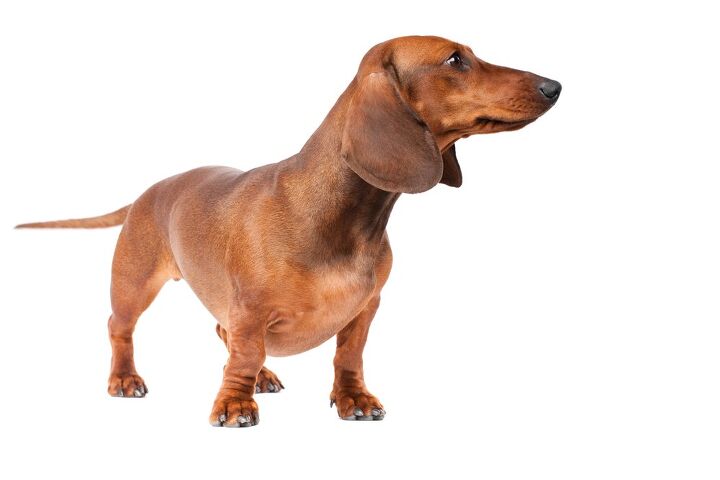
Dachshunds may share the behavior and appearance of a terrier, but in actuality, the breed belongs to the hound group of dogs. Since the Dachshunds were originally bred to trail and hunt animals, they probably descended from scent hounds, such as Bloodhounds, Pointers and Basset Hounds. But since the Dachshunds love to dig, it can be argued that they belong in the terrier group- it all depends on which way you look at it. As for the experts, most official canine organizations in the world have recognized the Dachshund as a distinct breed.
The Dachshund was recognized by the American Kennel Club in 1885. The AKC says about the breed that “the famously long, low silhouette, ever-alert expression, and bold, vivacious personality of the Dachshund have made him a superstar of the canine kingdom” and it’s hard not to agree- Wiener dogs are truly superstars in every sense of the word. In addition to the American Kennel Club, the Dachshund is also recognized by the FCI, The Kennel Club, and The United Kennel Club, to name a few.
Food / Diet
Because the Dachshund is prone to obesity, you should watch its food intake carefully. Don’t let it free feed or overeat. Every tip of the scale towards a higher number means additional strain on the Dachshund’s petite body and thanks to its unique build, it could mean serious problems with the spine down the road- not to mention universal risks such as diabetes or heart issues.
Most Dachshunds do well on a diet consisting mainly from high-quality dry dog food. When choosing kibble for your pet, make sure that it’s appropriate for their activity level and age and made from natural ingredients.
If you’re looking for a happy addition to your family, you can’t go wrong with a Dachshund.
Training
Although the Dachshund is not a difficult dog to train, you will need firmness and consistency to make the lessons stick. Once properly trained, the breed makes a great companion and family dog. Since this breed is so loyal, training strengthens the bond. Start training early in order to eliminate habits such as excessive digging and barking.
It’s important to note that Dachshunds believe it is the alpha in the family, so you need to show this dog who is the boss. If not disciplined, the Dachshund can become stubborn, but always reward training with high praise.
If a Dachshund gets bored, it will turn to destructive behavior. Always leave them with constructive toys so it always has something to do. As well, crate training works well for housebreaking this dog.
Weight
Both male and female Dachshunds can weight anywhere from nine to 20 pounds. Because it is smaller dog, take care that your dog doesn’t become overweight – it can become too much for its little legs to handle.
Temperament / Behavior
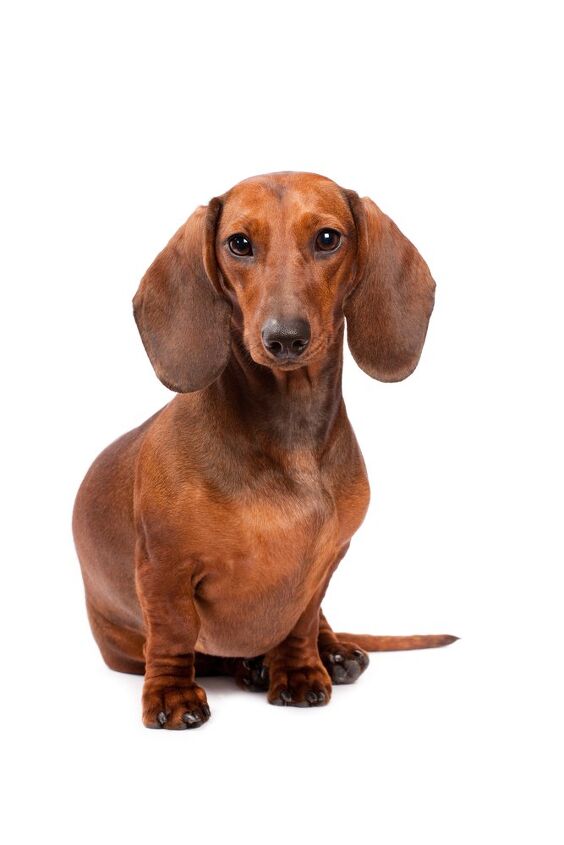
A lively and affectionate dog, the Dachshund has a bold personality. Even though it is friendly, the Dachshund can be willful when it wants something (you’ll see this side come out during training). Many believe the long-haired version is the calmest of the three varieties, while the wire-haired is more jovial and funny. The breed gets along better with older children and older, calmer dogs, but it does get jealous of other dogs and may snap at them if bothered. Dachshunds like to bark, and its bark is a surprisingly loud one for a dog that small. It loves to dig, and are good workers with plenty of energy and stamina. Dachshunds love being with its owners and make great family dogs.
Common Health Problems
An overall healthy dog, the Dachshund is prone to certain health problems. One is problem with its spinal disc, which can cause paralysis. To prevent this injury, ensure that your Dachshund doesn’t jump from high heights. Other problems that may present include urinary tract problems, heart disease and diabetes. Make sure your Dachshund gets plenty of exercise to prevent an overweight dog.
Life Expectancy
Dachshunds have a life expectancy of 12 to 15 years.
Exercise Requirements
Even though the Dachshund has high energy, it doesn’t mean this dog doesn’t enjoy being lazy. Add to that its love of food, and you could have an obese dog on your hands. One of the great things about having a small dog is that it can get its exercise indoors as well as out. Dachshunds like going for walks and playing catch. Due to its short legs, this dog isn’t a great runner. As it gets older, your Dachshund will exercise less on its own, so it’s up to you to get this dog going.
Once properly trained, the Dachshund makes a great companion and family dog.
AKC
The American Kennel Club says this about the breed: “The Dachshund, meaning “badger dog” in German, is a lively breed with a friendly personality and keen sense of smell. Known for their long and low bodies, they are eager hunters that excel in both above- and below-ground work.”
Coat
The Dachshund has three different coat varieties: short coated, wirehaired and long coated. The short-coated Dachshund has glossy smooth fur. The wire haired has a rougher outer coat with a softer, thinner undercoat as well as eyebrow and a beard. The long haired variety has wavy hair, with long hair on its tail.
Puppies
Be sure to socialize your Dachshund puppy with your family and other animals. As well, your Dachshund puppy should be brought up to know that it is not the boss in your house.
Photo credit: Nikolai Tsvetkov/Shutterstock


